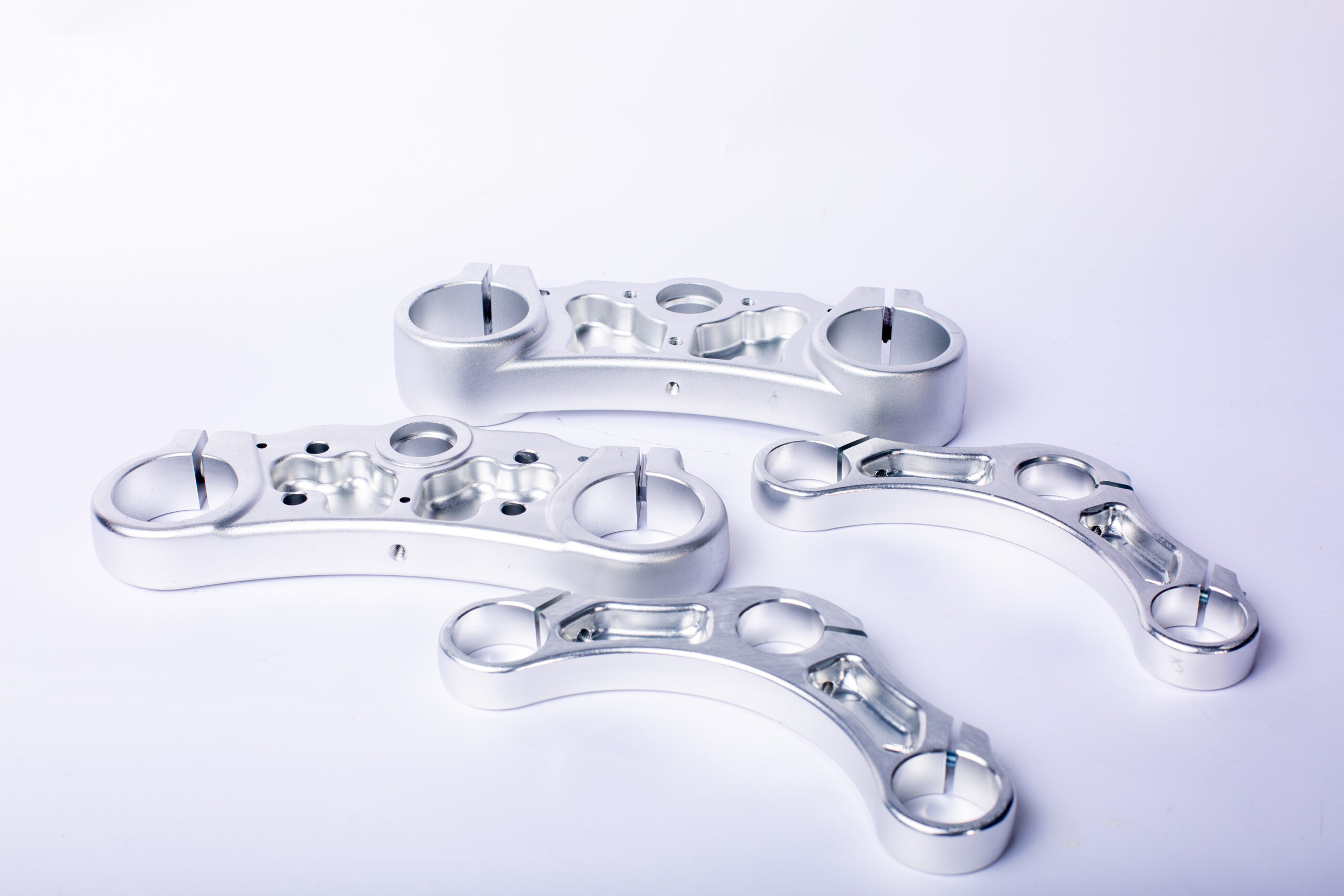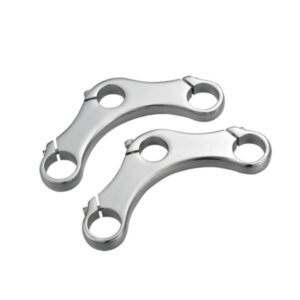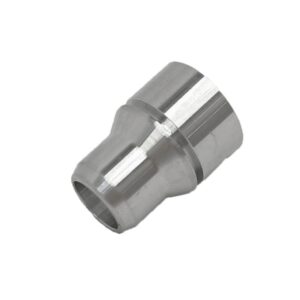MINGYU Tech is a leading manufacturer and supplier of high-quality aluminum forgings in the global market. We specialize in the production of precision-forged components for a wide range of industries, including automotive, aerospace, and defense. We offer a diverse range of aluminum forgings, from small machined parts to large and complex structures.
Our products are manufactured using premium quality raw materials, such as aluminum alloys, to ensure maximum strength and durability. Our forging process involves heating the aluminum billet to a precise temperature and shaping it into the desired form using hydraulic presses. This ensures precise tolerances and a smooth surface finish.
Our products are highly versatile and can be used in various applications, including engine components, suspension systems, and structural parts. We also provide custom forging services, where our team works closely with customers to design and produce tailored products that meet their specific requirements.
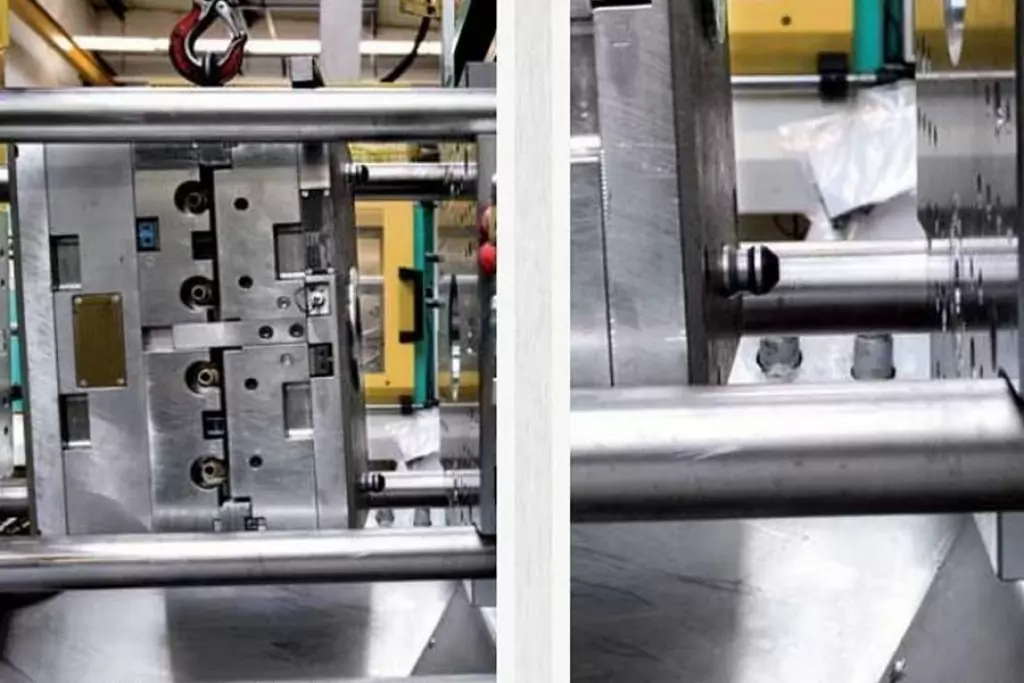
Aluminum forging is a manufacturing process that involves shaping heated aluminum into a desired form through the use of a mechanical press. This process creates durable, high-strength parts that are ideal for a wide range of industries, including automotive, aerospace, and construction. By using specialized dies and high pressure, aluminum forging produces parts with superior strength, fatigue resistance, and surface finish compared to other manufacturing methods. The lightweight nature of aluminum makes it a popular choice for forging, providing strong and efficient components for various applications. With the ability to create complex shapes and intricate designs, aluminum forging offers a cost-effective and reliable solution for producing high-quality and durable components.
Aluminum forging is a metal forming process that involves shaping heated aluminum material through compressive forces. This technique is used to make high-strength, lightweight and durable components for various industries, including aerospace, automotive, and construction. With its excellent strength-to-weight ratio, aluminum forging allows for the production of complex and intricate shapes that cannot be achieved through other methods. The process also enhances the mechanical properties of the material, resulting in improved strength, toughness, and corrosion resistance. Furthermore, aluminum forging offers a cost-effective and sustainable solution, as it requires less machining and waste material compared to other manufacturing methods. As a versatile and efficient process, aluminum forging is widely adopted to create a wide range of products, from small precision components to large structural parts.

Aluminum forging is a specialized process that involves shaping aluminum into desired forms through the application of pressure and heat. It is a widely used manufacturing method for creating strong and durable components for a variety of industries, such as aerospace, automotive, and construction. With its unique properties of being lightweight, corrosion-resistant, and high strength, aluminum has become a popular choice for forging applications. In this process, aluminum billets are heated to a specific temperature, placed in a die, and then compressed by a forging press to form the desired shape. This results in a high-quality piece with enhanced mechanical properties and a refined surface finish. Let’s dive deeper into the world of aluminum forging and explore its benefits and applications.
1.How does the grain flow pattern in an aluminum forging affect its strength and performance?
2.How does the microstructure of aluminum forge parts differ from those of other manufacturing methods?
3.What are the most common defects that can occur during the aluminum forging process and how are they prevented?
4.Can aluminum be forged at room temperature?
5.What are the safety precautions that should be taken during the aluminum forging process?
6.Is there a specific forging temperature range for different grades of aluminum?
7.How does the temperature and speed of the forging process affect the final properties of the aluminum part?
8.Can aluminum forgings be coated or anodized for additional protection or aesthetic purposes?
1.How does the grain flow pattern in an aluminum forging affect its strength and performance?
The grain flow pattern in an aluminum forging refers to the orientation and alignment of the aluminum grains within the forged part. This pattern is influenced by the forging process and can have a significant impact on the strength and performance of the final product.
- Strength: The grain flow pattern plays a crucial role in determining the strength of an aluminum forging. When the grains are aligned in the direction of the applied load, the forging will have higher strength and resistance to deformation. This is because the aligned grains can transfer the load more efficiently, resulting in a stronger and more durable part.
- Fatigue resistance: The grain flow pattern also affects the fatigue resistance of an aluminum forging. When the grains are aligned in the direction of the applied load, the forging will have better fatigue resistance as the load is distributed more evenly throughout the part. This reduces the risk of cracks and failures due to repeated loading.
- Directional properties: The grain flow pattern can also influence the directional properties of an aluminum forging. For example, if the grains are aligned in a specific direction, the forging will have higher strength and stiffness in that direction, making it suitable for applications where directional properties are critical, such as aerospace components.
- Microstructure: The grain flow pattern also affects the microstructure of the aluminum forging. When the grains are aligned, the microstructure will be more uniform, resulting in a more consistent and predictable material behavior. This is important for ensuring the reliability and performance of the forged part.
- Surface finish: The grain flow pattern can also impact the surface finish of an aluminum forging. When the grains are aligned, the surface will be smoother and have a more uniform texture, making it easier to machine and improve the overall aesthetics of the part.
In summary, the grain flow pattern in an aluminum forging is a critical factor that can significantly affect its strength, fatigue resistance, directional properties, microstructure, and surface finish. Therefore, it is essential to carefully control and optimize the grain flow pattern during the forging process to produce high-quality and high-performance aluminum forgings.
2.How does the microstructure of aluminum forge parts differ from those of other manufacturing methods?
The microstructure of aluminum forge parts differs from those of other manufacturing methods in several ways:
- Grain structure: Forged aluminum parts have a fine and uniform grain structure compared to other manufacturing methods. This is because the forging process involves the deformation and rearrangement of the metal grains, resulting in a more refined and aligned grain structure.
- Directional properties: The forging process also imparts directional properties to the aluminum, making it stronger and more resistant to fatigue and impact in the direction of the applied force. This is particularly beneficial for parts that will be subjected to high stress or load.
- No porosity: Unlike casting or machining, forging does not involve the melting and solidification of the metal, which can result in porosity or voids in the microstructure. This makes forged aluminum parts more structurally sound and less prone to defects.
- Improved mechanical properties: The forging process also improves the mechanical properties of aluminum, such as tensile strength, yield strength, and hardness. This is due to the plastic deformation and work hardening that occurs during forging.
- Fine grain flow lines: The flow of metal during forging creates fine grain flow lines in the microstructure, which contribute to the overall strength and toughness of the part.
- Homogeneity: Forging also ensures a high degree of homogeneity in the microstructure of aluminum parts, as the metal is worked and shaped uniformly throughout the entire part.
Overall, the microstructure of aluminum forge parts is more refined, stronger, and more uniform compared to parts produced by other manufacturing methods, making them ideal for applications that require high strength and reliability.
3.What are the most common defects that can occur during the aluminum forging process and how are they prevented?
1. Cracks: Cracks can occur during the forging process due to improper heating, excessive deformation, or inadequate lubrication. To prevent cracks, the forging temperature should be carefully controlled, and lubrication should be used to reduce friction and stress on the metal.
- Inclusions: Inclusions are impurities or foreign particles that can get trapped in the metal during the forging process. They can weaken the structural integrity of the final product. To prevent inclusions, the raw material should be carefully inspected and cleaned before forging, and the forging process should be carried out in a clean and controlled environment.
- Cold shuts: Cold shuts are defects that occur when two streams of metal do not properly fuse together during the forging process. This can happen due to inadequate heating or improper die design. To prevent cold shuts, the forging temperature should be carefully monitored, and the die design should be optimized for the specific shape and size of the product.
- Laps: Laps are defects that occur when the metal folds over itself during the forging process. This can happen due to excessive deformation or inadequate lubrication. To prevent laps, the forging process should be carefully controlled to avoid excessive deformation, and proper lubrication should be used to reduce friction.
- Misruns: Misruns occur when the metal does not completely fill the die cavity during the forging process. This can happen due to inadequate heating, improper die design, or insufficient pressure. To prevent misruns, the forging temperature should be carefully monitored, and the die design should be optimized for the specific shape and size of the product. Sufficient pressure should also be applied during the forging process.
- Shrinkage: Shrinkage occurs when the metal cools and contracts unevenly during the forging process, resulting in voids or cavities in the final product. This can happen due to inadequate heating or improper die design. To prevent shrinkage, the forging temperature should be carefully controlled, and the die design should be optimized to allow for proper flow of the metal.
- Warping: Warping is a common defect that occurs when the metal cools and contracts unevenly, causing the final product to become distorted or bent. This can happen due to inadequate heating or improper die design. To prevent warping, the forging temperature should be carefully controlled, and the die design should be optimized to allow for proper flow of the metal.
To prevent these defects, it is important to carefully monitor and control the forging process,
4.Can aluminum be forged at room temperature?
No, aluminum cannot be forged at room temperature. Forging is a process that involves shaping and compressing metal at high temperatures, typically above 700°C (1300°F). At room temperature, aluminum is too brittle and hard to be forged effectively. It requires high temperatures to become malleable and easily shaped.
5.What are the safety precautions that should be taken during the aluminum forging process?
1. Wear appropriate personal protective equipment (PPE): This includes safety glasses, gloves, and protective clothing to protect against burns and cuts.
- Use proper ventilation: Aluminum forging produces fumes and gases that can be harmful if inhaled. Make sure the work area is well-ventilated to prevent exposure to these fumes.
- Keep the work area clean and organized: Clutter and debris can create tripping hazards and increase the risk of accidents. Keep the work area clean and organized to prevent accidents.
- Use proper tools and equipment: Use tools and equipment specifically designed for aluminum forging. Make sure they are in good working condition and follow the manufacturer’s instructions for use.
- Use caution when handling hot materials: Aluminum can reach high temperatures during the forging process. Use tongs or other tools to handle hot materials and avoid direct contact with your skin.
- Follow proper forging techniques: Improper forging techniques can lead to accidents and injuries. Make sure to follow proper techniques and procedures to ensure safety.
- Have a first aid kit nearby: In case of any accidents or injuries, have a first aid kit nearby and know how to use it.
- Train employees on safety procedures: All employees involved in the aluminum forging process should be trained on safety procedures and protocols to prevent accidents.
- Regularly inspect equipment: Regularly inspect all equipment and machinery used in the forging process to ensure they are in good working condition and do not pose any safety hazards.
- Have an emergency plan in place: In case of any emergencies, have an emergency plan in place and make sure all employees are aware of it. This should include procedures for handling accidents, fires, and other emergencies.
6.Is there a specific forging temperature range for different grades of aluminum?
Yes, there is a specific forging temperature range for different grades of aluminum. The exact temperature range may vary slightly depending on the specific alloy and the desired properties of the final product, but generally, the following temperature ranges are recommended for forging different grades of aluminum:
1xxx series (pure aluminum): 650-750°C (1200-1380°F)
2xxx series (aluminum-copper alloys): 480-595°C (900-1100°F)
3xxx series (aluminum-manganese alloys): 480-595°C (900-1100°F)
4xxx series (aluminum-silicon alloys): 480-595°C (900-1100°F)
5xxx series (aluminum-magnesium alloys): 480-595°C (900-1100°F)
6xxx series (aluminum-magnesium-silicon alloys): 480-595°C (900-1100°F)
7xxx series (aluminum-zinc-magnesium alloys): 480-595°C (900-1100°F)
It is important to note that the exact temperature range may also depend on the size and complexity of the part being forged, as well as the specific forging process being used. It is always best to consult with a metallurgist or manufacturer for specific temperature recommendations for a particular grade of aluminum.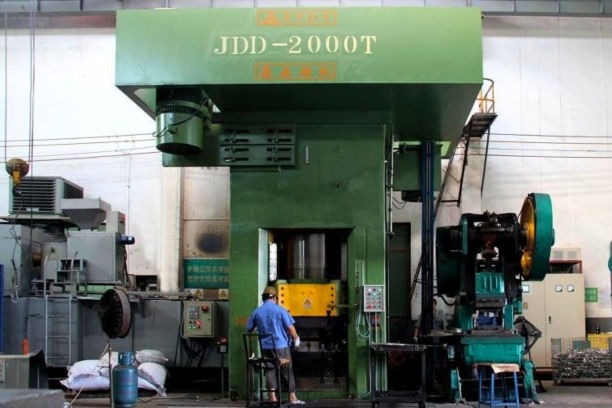
7.How does the temperature and speed of the forging process affect the final properties of the aluminum part?
The temperature and speed of the forging process can have a significant impact on the final properties of an aluminum part. Here are some ways in which these factors can affect the properties of the part:
- Grain structure: The temperature and speed of the forging process can affect the grain structure of the aluminum. Higher temperatures and slower speeds can result in larger and more uniform grains, while lower temperatures and faster speeds can lead to smaller and more irregular grains. A finer grain structure can improve the strength and toughness of the part.
- Mechanical properties: The temperature and speed of the forging process can also affect the mechanical properties of the aluminum part, such as its strength, ductility, and toughness. Higher temperatures and slower speeds can result in a stronger and more ductile part, while lower temperatures and faster speeds can lead to a more brittle part.
- Residual stresses: The temperature and speed of the forging process can also influence the level of residual stresses in the aluminum part. Higher temperatures and slower speeds can help to reduce residual stresses, while lower temperatures and faster speeds can result in higher levels of residual stresses. Excessive residual stresses can weaken the part and make it more prone to failure.
- Surface finish: The temperature and speed of the forging process can also affect the surface finish of the aluminum part. Higher temperatures and slower speeds can result in a smoother and more uniform surface, while lower temperatures and faster speeds can lead to a rougher and more uneven surface. A smoother surface can improve the appearance and corrosion resistance of the part.
In summary, the temperature and speed of the forging process can have a significant impact on the final properties of an aluminum part, including its grain structure, mechanical properties, residual stresses, and surface finish. It is important to carefully control these factors to achieve the desired properties in the finished part.
8.Can aluminum forgings be coated or anodized for additional protection or aesthetic purposes?
Yes, aluminum forgings can be coated or anodized for additional protection or aesthetic purposes. Coating options include powder coating, painting, and plating, while anodizing involves creating a protective oxide layer on the surface of the aluminum. These processes can provide added corrosion resistance, improve surface hardness, and enhance the appearance of the forgings.

